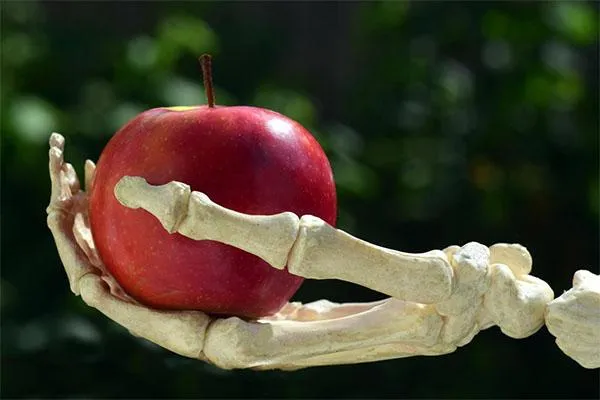BLOG

The Dangers Lurking in Foods You Eat Every Day
Before sneaking their way to your plate, most foods have been through numerous processes. You may be unaware of this, but some of the food you have around your home may be poisonous.
So, we must see the whole picture to notice the difference between real food and poison. Your nutrition can be a positive or negative thing, depending on the origin, cultivation, and fertilizers, beyond other factors involved in the process of growing the foods you eat.
Although many people claim that worrying about what we consume will not get us anywhere, we must be aware we only have one body. Anyway, you shouldn't worry about it, but simply take those things into consideration.
So, in this article, we’ll discuss the dangers that may be hiding in the foods we eat every day. That way, we can make better choices and choose foods that nurture our bodies and help us thrive instead of making us sick.
Now, before we start, think about what you have been eating this week.
Do you know where your food came from? Or how the veggies and fruit you eat were grown?
Let’s find out…
The real problems with phosphate fertilizer and glyphosate
Nowadays, most herbicides are very dangerous for our bodies. In fact, a myriad of studies claims the disadvantages these may have for our bodies.
For instance, take Glyphosate, a broad spectrum herbicide and the most widely used worldwide, or take phosphate, a form of phosphoric acid, which contains phosphorus and is also highly toxic for our bodies.
But why are they dangerous? Let me explain.
Both phosphate and glyphosate affect our bodies. Phosphates can decrease levels of calcium in the blood, as well as affecting proteins and how they act. In the meantime, the International Agency for Research on Cancer concluded that Glyphosate might probably be carcinogenic.
The uncomfortable truth is that we can find these two potentially toxic elements in our foods every day, but are we aware?
And worse, do we even know at what cost –both to our health and wellbeing and our planet’s?
The Costs: Dead zones, Environmental Destruction and Cancer
Some studies have shown that the increasing application of pesticides and fertilizers has several costs to our environment. Firstly, we should know that many of the insects that we are destroying with these herbicides are also harming key players in the development of plants, such as including pollinators and crop pests’ predators are directly affecting the crops.
Besides, this issue affects the soil where it’s applied. In fact, after utilizing fertilizers, we can create “dead zones,” meaning a place where no life can be grown or sustained.
And what’s worse, these chemicals make their way through the soil, eventually reaching water supplies and potentially contaminating those sources of drinking water for years to come.
But that’s not all. Let’s say we planted new pesticide-free plants. Guess what? These, too, would test positive for chemicals because the soils remain contaminated.
Cancer plays another important role here since we must not forget that as well as it is poison for animals, food, and soil. By consuming food and water filled with pesticides, we are also ingesting poison. It may not be enough to notice, but it’s definitely enough to hurt our bodies over time.
How the herbicides used to grow our foods are poising us.
Most herbicides are neurotoxic and carcinogenic and, in high enough concentrations, can affect our systems. But unfortunately, most of the big corporations dedicated to growing foods are more concerned about rentability than the health and well-being of people.
Now, the big question is: what are we buying in the supermarket? Well, let me tell you that most of the foods we eat daily come from genetically modified crops, and that’s not the entire problem.
The problem with these crops is they were designed to tolerate common herbicides, such as Roundup, the most widely used in agriculture. And guess what the active ingredient is? Yeah, you guessed it, glyphosate! Surprised? I don’t think so…
Alternatives to stop this
If you’re still here, like me, you’re probably worried about all this information you’ve just learned.
But that’s until I came to the conclusion that even when there are plenty of big companies that don’t have our health’s best interests, we can still find new ways to counteract this.
Today, we have many options when it comes to choosing a healthy lifestyle. There are countless possibilities, and the costs are the same or less than buying at the supermarket. You should pick what suits you best!
For instance, you could start making different choices. Small changes like buying in the farmer’s market, selecting GMO-free vegetables, or growing your own food.
The Final Takeaway
We should all be concerned about these risks to our food and reduce the use of herbicides and pesticides.
Undoubtedly, we should be concerned about the risks before we consume anything, but don’t panic. Now that we know that these chemicals are not good for our health, we can make a difference.
Avoiding most foods is not the final solution. It’s not enough to eat only home-grown vegetables because raising our voices could also be as beneficial to stop this and reclaim our soils and our health.
So, if you are worried about your health, you better grow your food or ask where and how it was fed before you buy it. Remember that we have a lot of information, and we’re the consumers, so it is time to take action.
Briefly, we have the necessary tools to fix and protect our health. Despite the fact that most of the food, crops, soils, and animals are contaminated, we can still make the change.
Start with small choices, grow your foods, support local farmers, and tell a friend. Remember, as Paretto’s law implies: 80% of your results come from 20% of your inputs.
© Copyright 2022 Radha Patel
Powered by Sitefulia

